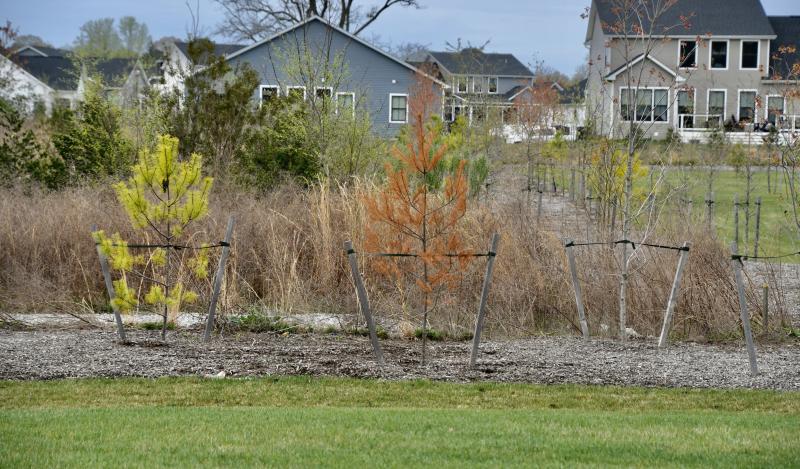Coalition weighs in on perimeter buffers

The Sussex Preservation Coalition Tree Preservation Committee has developed a list of possible changes to the proposed Sussex County perimeter buffer ordinance.
Public hearings on the ordinance have not yet been scheduled.
Committee Chair Steve Sinclair said many of the provisions in the proposed ordinance are a major improvement from the original ordinance enacted in 1984.
He said he moved to the area from Vermont because of the woodlands and farmland, which he said are disappearing rapidly.
Sinclair said with the proper regulations in place, forests and developments can coexist.
SPC recommendations
Sinclair, speaking at the coalition’s April 16 meeting, provided a list of recommendations with special emphasis on the width of buffers in the proposed ordinance.
He said the buffer width of existing woodlands should be increased to 50 feet plus the 20-foot protection zone. The proposed ordinance has buffers of 30 feet plus the protection zone.
“This is the bare minimum. Buffers should be as wide as the average height of trees in the buffer,” Sinclair said.
He said plantings should include larger-caliber trees at a higher density.
Under the proposal, buffers must be planted with native or local trees at least 6 feet in height, and shrubs and trees must meet American National Standards Institute values: 70% deciduous, 30% evergreens; and 15 trees per 100 feet.
“Survival of trees of that height is slim,” he said.
The coalition recommends that mitigation requirements of removed woodlands should include planting of new forests in the open space.
He said the resource buffer ordinance references wildlife habitat, water quality and flood mitigation as purposes, which are not reflected in the proposed perimeter buffer ordinance.
Perimeter buffers/tree preservation should expand beyond screening to include wildlife habitat, flood mitigation, air and water quality, noise reduction and quality of life, he added.
Forest assessment should be an element of overarching conservation plans required for all parcels, identifying all natural resources, including resource buffers and other tree preservation practices, Sinclair said.
Proposed regulations
A buffer must be planted before the first building permit is issued, but can be done in phases.
Incentives for saving existing trees in the buffer including a look back to see if the wooded area for the perimeter buffer was cut down within five years of an application being filed.
The removed wooded area within a perimeter buffer would be measured to determine the acreage that was harvested. The perimeter buffer would have be replanted with double the number of trees and shrubs, including 15 plantings for every 50 feet.
A new area double the size of the harvested perimeter buffer would be planted or preserved, either on the parcel or on a nearby parcel.
When woodlands already exist, the perimeter buffer and protection area must be delineated and protected before the notice to proceed is issued for site work to begin.
A performance bond of 125% of the cost of installing the perimeter buffer and the value of replacement plantings, or $50,000, whichever is greater, would be required.
The landscape plan would include: approximate location of silt fencing; location, height and species of new trees and shrubs; location of perimeter buffer signage; a planting schedule; and a survey of new trees to be planted and existing trees to be used.
Tree mitigation would be required when perimeter buffers or protection areas in existing woodlands are damaged. A plan would be developed by a licensed professional. The mitigation rate of three trees for every one tree removed or damaged would be required.
Existing wooded perimeter buffers would require:
• A forest assessment by a certified professional
• Woodlands shown on site and landscape plans
• Woodlands be kept in a natural state with limited activity
• Perimeter buffers (30 feet wide) be protected by a perimeter buffer protection area (20 feet wide)
• Perimeter buffers and protection areas have a silt fence and be clearly marked during construction.
With no woods:
• Developer must adhere to perimeter buffer standards
• A newly planted perimeter buffer would have a two-year guarantee with the developer responsible to replace any losses.


















































